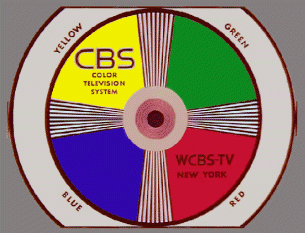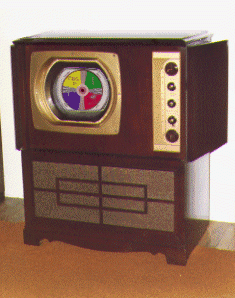xxxxxxxxxxxxxxxxxxxxxxx xxxxxxxxxxxxxxxxxxxxxxxxxxxxxx xxxxxxxxxxxxxxxxxxxxxxxx xxxxxxxxxxxxxxxxxxxxxxxxxxxxx xxxxxxxxxxxxxxxxxxxxxxxxxxxxxx xxxxxxxxxxxxxxxxxxxxx xxxxxxxxxxxxxxx xxxxxxxxxxxxxxxxxx xxxxxxxxxxxxxxxxxxxxxxxxxxxxxxxxxxxxxxxxxxx xxxxxxxxxxxxxxxxxxxxxxxxxxxxxx xxxxxxxxxxxxxxxxxxxxxxxx xxxxxxxxxxxxxxxxxxxxxxxxxxxxx xxxxxxxxxxxxxxxxxxxxxxxxxxxxxx xxxxxxxxxxxxxxxxxxxxx xxxxxxxxxxxxxxx xxxxxxxxxxxxxxxxxx xxxxxxxxxxxxxxxxxxxxxxxxxxxxxxxxxxxxxxxxxxx xxxxxxxxxxxxxxxxxxxxxxxxxxxxxx xxxxxxxxxxxxxxxxxxxxxxxx xxxxxxxxxxxxxxxxxxxxxxxxxxxxx xxxxxxxxxxxxxxxxxxxxxxxxxxxxxx xxxxxxxxxxxxxxxxxxxxx xxxxxxxxxxxxxxx xxxxxxxxxxxxxxxxxx xxxxxxxxxxxxxxxxxxxxxxxxxxxxxxxxxxxxxxxxxxx xxxxxxxxxxxxxxxxxxxxxxxxxxxxxx xxxxxxxxxxxxxxxxxxxxxxxx xxxxxxxxxxxxxxxxxxxxxxxxxxxxx xxxxxxxxxxxxxxxxxxxxxxxxxxxxxx xxxxxxxxxxxxxxxxxxxxx xxxxxxxxxxxxxxx xxxxxxxxxxxxxxxxxx xxxxxxxxxxxxxxxxxxxxxxxxxxxxxxxxxxxxxxxxxxx xxxxxxxxxxxxxxxxxxxxxxxxxxxxxx xxxxxxxxxxxxxxxxxxxxxxxx xxxxxxxxxxxxxxxxxxxxxxxxxxxxx xxxxxxxxxxxxxxxxxxxxxxxxxxxxxx xxxxxxxxxxxxxxxxxxxxx xxxxxxxxxxxxxxx xxxxxxxxxxxxxxxxxx xxxxxxxxxxxxxxxxxxxxxxxxxxxxxxxxxxxxxxxxxxx xxxxxxxxxxxxxxxxxxxxxxxxxxxxxx xxxxxxxxxxxxxxxxxxxxxxxx xxxxxxxxxxxxxxxxxxxxxxxxxxxxx xxxxxxxxxxxxxxxxxxxxxxxxxxxxxx xxxxxxxxxxxxxxxxxxxxx xxxxxxxxxxxxxxx xxxxxxxxxxxxxxxxxx xxxxxxxxxxxxxxxxxxxxxxxxxxxxxxxxxxxxxxxxxxx xxxxxxxxxxxxxxxxxxxxxxxxxxxxxx xxxxxxxxxxxxxxxxxxxxxxxx xxxxxxxxxxxxxxxxxxxxxxxxxxxxx xxxxxxxxxxxxxxxxxxxxxxxxxxxxxx xxxxxxxxxxxxxxxxxxxxx xxxxxxxxxxxxxxx xxxxxxxxxxxxxxxxxx xxxxxxxxxxxxxxxxxxxxxxxxxxxxxxxxxxxxxxxxxxx xxxxxxxxxxxxxxxxxxxxxxxxxxxxxx xxxxxxxxxxxxxxxxxxxxxxxx xxxxxxxxxxxxxxxxxxxxxxxxxxxxx xxxxxxxxxxxxxxxxxxxxxxxxxxxxxx xxxxxxxxxxxxxxxxxxxxx xxxxxxxxxxxxxxx xxxxxxxxxxxxxxxxxx xxxxxxxxxxxxxxxxxxxxxxxxxxxxxxxxxxxxxxxxxxx xxxxxxxxxxxxxxxxxxxxxxxxxxxxxx xxxxxxxxxxxxxxxxxxxxxxxx xxxxxxxxxxxxxxxxxxxxxxxxxxxxx xxxxxxxxxxxxxxxxxxxxxxxxxxxxxx xxxxxxxxxxxxxxxxxxxxx xxxxxxxxxxxxxxx xxxxxxxxxxxxxxxxxx xxxxxxxxxxxxxxxxxxxxxxxxxxxxxxxxxxxxxxxxxxx xxxxxxxxxxxxxxxxxxxxxxxxxxxxxx xxxxxxxxxxxxxxxxxxxxxxxx xxxxxxxxxxxxxxxxxxxxxxxxxxxxx xxxxxxxxxxxxxxxxxxxxxxxxxxxxxx xxxxxxxxxxxxxxxxxxxxx xxxxxxxxxxxxxxx xxxxxxxxxxxxxxxxxx xxxxxxxxxxxxxxxxxxxxxxxxxxxxxxxxxxxxxxxxxxx xxxxxxxxxxxxxxxxxxxxxxxxxxxxxx xxxxxxxxxxxxxxxxxxxxxxxx xxxxxxxxxxxxxxxxxxxxxxxxxxxxx xxxxxxxxxxxxxxxxxxxxxxxxxxxxxx xxxxxxxxxxxxxxxxxxxxx xxxxxxxxxxxxxxx xxxxxxxxxxxxxxxxxx xxxxxxxxxxxxxxxxxxxxxxxxxxxxxxxxxxxxxxxxxxx xxxxxxxxxxxxxxxxxxxxxxxxxxxxxx xxxxxxxxxxxxxxxxxxxxxxxx xxxxxxxxxxxxxxxxxxxxxxxxxxxxx xxxxxxxxxxxxxxxxxxxxxxxxxxxxxx xxxxxxxxxxxxxxxxxxxxx xxxxxxxxxxxxxxx xxxxxxxxxxxxxxxxxx xxxxxxxxxxxxxxxxxxxxxxxxxxxxxxxxxxxxxxxxxxx xxxxxxxxxxxxxxxxxxxxxxxxxxxxxx xxxxxxxxxxxxxxxxxxxxxxxx xxxxxxxxxxxxxxxxxxxxxxxxxxxxx xxxxxxxxxxxxxxxxxxxxxxxxxxxxxx xxxxxxxxxxxxxxxxxxxxx xxxxxxxxxxxxxxx xxxxxxxxxxxxxxxxxx xxxxxxxxxxxxxxxxxxxxxxxxxxxxxxxxxxxxxxxxxxx xxxxxxxxxxxxxxxxxxxxxxxxxxxxxx xxxxxxxxxxxxxxxxxxxxxxxx xxxxxxxxxxxxxxxxxxxxxxxxxxxxx xxxxxxxxxxxxxxxxxxxxxxxxxxxxxx xxxxxxxxxxxxxxxxxxxxx xxxxxxxxxxxxxxx xxxxxxxxxxxxxxxxxx xxxxxxxxxxxxxxxxxxxxxxxxxxxxxxxxxxxxxxxxxxx xxxxxxxxxxxxxxxxxxxxxxxxxxxxxx xxxxxxxxxxxxxxxxxxxxxxxx xxxxxxxxxxxxxxxxxxxxxxxxxxxxx xxxxxxxxxxxxxxxxxxxxxxxxxxxxxx xxxxxxxxxxxxxxxxxxxxx xxxxxxxxxxxxxxx xxxxxxxxxxxxxxxxxx xxxxxxxxxxxxxxxxxxxxxxxxxxxxxxxxxxxxxxxxxxx xxxxxxxxxxxxxxxxxxxxxxxxxxxxxx xxxxxxxxxxxxxxxxxxxxxxxx xxxxxxxxxxxxxxxxxxxxxxxxxxxxx xxxxxxxxxxxxxxxxxxxxxxxxxxxxxx xxxxxxxxxxxxxxxxxxxxx xxxxxxxxxxxxxxx xxxxxxxxxxxxxxxxxx xxxxxxxxxxxxxxxxxxx Ed Reitan's Color Television HistoryCBS Field Sequential Color System CBS Color System Test Pattern
Color Television System Development during the FCC Hearings 1949-1950With increased interest by the industry in color television, the Federal Communications Commission on July 11, 1949 called for hearings to determine the feasibility of introducing color service. Hearings began on September 26, 1949 and were, to last until May 26, 1950 with 10,000 pages of testimony and 265 exhibits submitted for the record. Three competing methods of color were proposed: the Field Sequential method by CBS; the Dot Sequential approach of RCA; and the Line Sequential proposed by Color Television Incorporated.
CBS Field Sequential Color SystemThe CBS field sequential color system in its simplest form consisted of a rotating color wheel of red, blue, and green filter segments in front of a monochrome camera, feeding a black and white CRT receiver viewed through a second rotating color wheel. The two wheels were kept in phase synchronization, such that successive television fields were viewed using identical color primary filters to that at the camera. To overcome flicker, the field rate was increased from 60 to 144 fields per second resulting in 24 complete color frames per second. To compensate for the increased field rate within the standard 6-MHz channel, the lines per frame were reduced from 525 to 405. A 29,160-Hz line rate resulted. (ref.) This led to the basic incompatibility of the CBS system: no standard monochrome receiver could present an intelligible picture during the color telecasts. CBS had first broadcast its Field Sequential Color System as early as August 28, 1940. Their 1949 Color System was the third field sequential approach to be proposed to the FCC for adoption. They had suggested that their field sequential standards be adopted in 1941 and 1946. At those earlier times, with few black and white receivers in the hands of the public, the adoption of the CBS system might have been feasible . At the conclusion of the color hearings in 1950, there was much pressure by the color television proponents for the FCC to immediately adopt a color standard. On September 1, 1950, the FCC issued its First Report on Color Television Issues (Public Notice 50-1064) in which it deferred the adoption of a standard. The FCC declared that the poor performance of color fidelity, interfering dot and line crawl patterns, poor registration, and high studio and receiver cost, associated with the RCA and CTI systems, precluded their adoption. The compatibility problem of the CBS system was acknowledged. However, the FCC reasoned that if manufacturers would build black and white receivers that could handle both monochrome and CBS scanning standards, time could be allowed for the development of an acceptable compatible system. If the set makers could not provide this "bracket standard" reception capability, then the FCC would be forced to adopt the CBS system immediately to avert the continually growing compatibility problem. The FCC reasoned that, with the 5-6 million annual receiver sales rate, within one year 40 percent of the receivers in use could receive the CBS broadcasts. Of course, the manufacturing industry refused, when faced with adding an additional increment to their receiver sales cost within what they thought was an impossible timetable. Therefore, the FCC in its October 11, 1950 Second Report on Color Television Issues (Public Notice 50-1224), formally adopted the CBS system as the USA standard for color television. RCA, on October 17. 1950, brought suit against the FCC in the Federal District Court in Chicago to halt the start of CBS colorcasts. After the court upheld the FCC order, RCA appealed to the Supreme Court which, on May 28, 1951, affirmed the lower court ruling in favor of CBS. RCA effectively delayed the initiation of the CBS system, allowing the continued sale of even more black and white sets which could not receive the CBS signals. On June 25, 1951 regularly scheduled commercial colorcasts began by CBS on a five-station East Coast network. More than 10.5 million monochrome sets in the U-S, were blind to these telecasts. The CBS colorcasts were stillborn.... The RCA delaying tactic had already been successfully fatal to the CBS Color System. CBS-Columbia 12CC2 Field Sequential Color Receiver (1951)With most of the manufacturing industry against adoption of the field sequential system, CBS was forced to purchase Hytron Radio and Electronics Corporation with its Air-King receiver manufacturing subsidiary. The acquistion was done, according to Frank Stanton President of CBS, "to assure at least some source for color receivers to the public". On September 20, 1951, production began of the first (and only) commercial color television set - the CBS-Columbia Model 12CC2. Sales of the set began by Gimbels and Davega in New York for $499.95, According to Allen B. DuMont, 200 of these sets were shipped and I00 were sold. 'The UCLA Collection of Television Technology has one of the two models known to have survived.
CBS-Columbia 12CC2 Field Sequential Color Receiver (1951) front viewThe CBS set received either the 525-line/60-HZ monochrome or 405-line/144-Hz field rate color standard by switch selection. No complete schematic for the receiver has been found. But there were some articles that described circuit features (ref.18). Pictures presented on a 10RP4 CRT were enlarged to 12 1/2-inches by an oil filled lens. Between the lens and CRT face were dual 22 1/2-inch color discs. Each disc had three color segments and a 180-degree clear sector. When color reception was selected, the color segments of the 1440-rpm disc were opposite to each other acting as a 6-segment color disc. The customer operated color / monochrome switch was linked to a number of SPDT switches in the chassis, including four in the vertical oscillator-output and seven in the horizontal sync-output areas. The color wheel assembly was driven by a 1748-rpm motor that was kept in synchronization by being in series with an AC saturable reactor transformer. The dc winding of this reactor was in series with the plate of a power pentode. The control bias of this tube was provided by a phase detector which compared the received vertical sync with a signal indicating wheel position from a generator on the shaft of the rotating wheel assembly. When monochrome operation was selected, a friction brake rapidly slowed the two wheels to a stop. The motor reversed to overlap the two clear sections and stopped them over the CRT for direct viewing of the black and white program.
Viewer and advertising industry interest with the CBS system was disappointing. No sponsors were found as the schedule increased from 4 1/2 hours for the week of June 21, 7 1/2 hours for the week of September 24, and 12 hours for the week of October 15. Actually, CBS did not fully commit to their system as colorcast were only scheduled in the evening before prime time telecasts. In less than a month after sales of this first receiver first began, Charles E. Wilson of the Defense, Production Administration asked CBS to suspend production of color receivers, "to conserve materials for defense." This, according to Allan B. DuMont was, "a move to take Columbia off the hook." CBS announced (too quickly) that it would stop colorcasts and recalled and destroyed the sold color sets. The last commercial CBS Color System broadcast was the North Carolina-Maryland football game on October 20, 1951.
On November 20, 1951, the National Production Authority issued Order M-90 prohibiting the manufacturing of color sets for general public sale. This order was the only control measure limiting an end product issued after World War II, Of political interest was that monochrome television receiver production was not affected. Two years later, during a Congressional hearing on March 25, 1953, CBS announced that it had no plans to resume its color system. The NPA lifted its ban on receiver manufacturing the next day! It was now the obligation of the television industry to band together to devise an acceptable compatible color television standard. Continue to "RCA Dot Sequential Color System " The CBS Color Television System Test Pattern was provided by Harold Deppe, Jr. from an original slide in the collection of his father, Harold Deppe, Sr. The slide was badly faded and was heavily color corrected by Don Kent. V1.00 8/24/97 Copyright 1997, Ed Reitan
|



